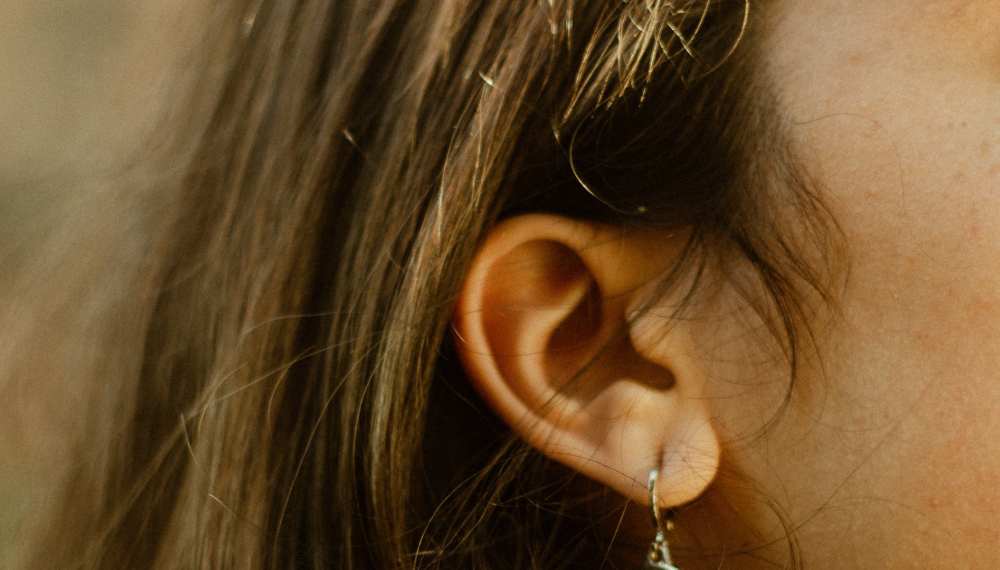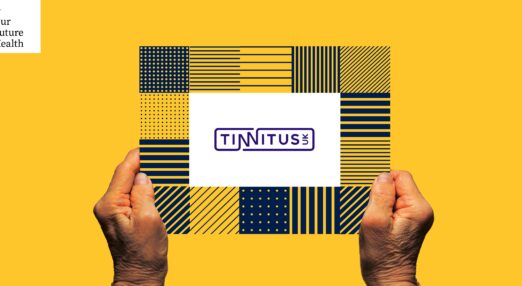Tinnitus and ear wax
General advice says to leave ear wax alone. However, ear wax build-up can affect how well hearing aids work, and for some people can trigger tinnitus. If ear wax build up is bothersome, it should be treated.
If you think you may have a build-up of ear wax, consider ear wax softening drops or olive oil as the first option. Do not use cotton buds or other items to try to remove the wax.
If the build-up persists, visit a healthcare professional, who will advise whether ear wax removal is necessary and what type of procedure is most appropriate for you.
What is ear wax?
Ear wax is an important and natural secretion found in the ear. It keeps the ear canal lubricated and protects the ear against dust, dirt and bacteria, which helps to prevent infection.
Ear wax, or cerumen as it is also known, is made up of epithelium (skin cells), dust and oily secretions from glands in the ear canal. These secretions lubricate the ear canal and prevent it becoming too dry. The makeup of ear wax varies from person to person depending on diet, age, ethnicity and environment.
How is ear wax linked to tinnitus?
Some people with existing tinnitus report they are more aware of their tinnitus when their ears are full of wax. This is because the wax build-up effectively blocks external sounds from reaching the ear drum, thereby making internal sounds more noticeable. When this wax is removed, most people find their perception of tinnitus decreases. Very occasionally, people with tinnitus have reported ear wax removal made their tinnitus more bothersome. This could be because the procedure was unpleasant or uncomfortable. The effect is usually temporary. Considering that ear wax removal is a very common procedure, complications are few and far between.

What should I do about ear wax build up?
If ear wax is not causing any problems, it is best left alone. The ear is self-cleaning and the wax should clear naturally. If ear wax is noticed on the outer ear, a wipe with a clean cloth may be all that is needed.
Sometimes ear wax may build up. This can occur if your ear wax is very dry or if you have a narrow or hairy ear canal. Ear wax can also build up if it has been pushed down the ear canal by cotton buds, hearing aids or ear buds, for example.
If ear wax build up is causing tinnitus, problems with your hearing aids, vertigo, decreased hearing ability, or is uncomfortable, it may need to be removed.
Open the boxes below for more information
It is possible to treat your ear wax at home, provided you don’t have any of the following – in which case, you should see your GP:
- pain and/or discharge from your ears
- perforated ear drum
- current ear infection
- sudden hearing loss.
It can be tempting to use cotton buds to remove ear wax, but they can irritate the ear canal, stripping it of its natural oils and causing it to feel itchy. Cotton buds can also push the ear wax further into the ear and may result their use may lead to serious injury to the ear canal and/or ear drum.
Ear wax softening
Most people tend to use ear wax softening drops as the first option. These may soften the wax enough to help it move out of the ear naturally. There are many ear drops on the market. Some drops may be harsh to use, particularly if you have sensitive skin or any skin condition such as eczema or psoriasis.
An alternative to drops is olive oil. Standard olive oil for cooking can be used. It does not need to be warmed before use.
If you use olive oil, it is best to use a dropper and lay with your head on one side for a couple of minutes to allow the drops to move along the ear canal. Afterwards, a tissue may be used to soak up any excess from the outside of the ear.
Two or three drops in each ear, twice a day for one to two weeks is usually enough. The ear wax will often come out by itself. Some people find it easiest to put in the ear drops when they are in bed, first thing in the morning and last thing at night.
Olive oil also comes in a spray form, which has some advantages. It is easy to use, the tip cannot be pushed too far into the ear, and it provides better coverage of the ear wax compared to drops, which can pool on the floor of the ear canal.
If you often get a build-up of ear wax, using a couple of drops of olive oil once a week may help.
Practitioners of Hopi ear candling often claim that it is effective for removing ear wax but we are concerned about this treatment. There is no evidence that it helps people with tinnitus and there is good evidence the use of ear candles has damaged some people’s ears and faces. We believe ear candling to be unsafe and its use should be avoided.
The National Institute for Health and Care Excellence (NICE) recommends that ear wax removal should be offered in the community. However, it is no longer one of the core services GP practices are obliged to provide. Please contact your GP to see if this service is still available in your area.
Many people are now being advised to seek help from a private provider. The cost varies and some providers do not offer all the available methods. If you decide to have wax removed by a private provider, please ensure the clinician is suitably trained, qualified and follows appropriate professional guidelines.
However, it is important to see your GP in the first instance if:
- you have a perforated ear drum
- you have had ear surgery
- previous attempts at removal have been unsuccessful
- your hearing or tinnitus continue to be affected after ear wax removal.
Your GP may refer you to a specialist Ear, Nose and Throat service for further advice and investigation.
If self-management of ear wax build-up does not resolve the problem, then you may need to have it removed by a qualified healthcare professional. NICE currently advises two methods: electronic irrigation and microsuction. Some practitioners also use specialised tools to remove wax manually. Some use a combination of methods to safely remove all the ear wax. It is recommended to use wax softening drops for up to five days prior to your appointment. If any method being used is painful or causes discomfort, tell the clinician at once.
In the past, it was common to perform wax removal using a procedure called manual syringing. This involved the injection of water into the ear using a large metal syringe. NICE no longer recommends this method due to the potential risks involved. Electronic irrigators with controlled pressures are used instead which are gentler and safer.
Electronic ear irrigation
In electronic ear irrigation your ear is rinsed with warm water from an electronic irrigator to dislodge the wax and aid its removal from the ear. The wax and water are collected in a metal cup-shaped dish which is held beneath your ear. Ear irrigation does make some noise but it should not be excessive or uncomfortable.
It is important to note that this procedure cannot be carried out if you have had any ear surgery, recent ear infections or a perforated ear drum. It is also not advisable to carry out the procedure if you have any dizziness problems, very troublesome tinnitus or extreme intolerance to everyday sounds (hyperacusis).
Microsuction
In recent years, microsuction has become the preferred method to safely and painlessly remove ear wax build-up. During this procedure, the clinician looks in your ear using a high-powered microscope and gently suctions the wax out with a small instrument, without the use of any liquid.
This procedure is safe to use for most people, even for those with a perforated ear drum. However, some people may find the procedure to be noisy or slightly uncomfortable. It should not be performed if you experience severe dizziness, extreme intolerance to everyday sounds (hyperacusis) or are unable to hold your head still for the duration of the procedure, which usually takes between 15 and 30 minutes to clear both ears.
Manual removal
Ear wax may be removed by a clinician using a headlight and a handheld instrument. Remember, do not try to remove wax yourself with an instrument or device, as this will likely push the wax further into the ear or cause injury.
The clinician who does your ear wax removal will have been trained and will use best practice procedures to minimise any risk of harm. However, no medical intervention is completely without risk.
Although problems following ear wax removal are very rare, these include:
- damage to the skin of the ear canal or ear drum
- infection of the ear canal or ear
- temporary reduction in hearing
- permanent reduction in hearing
- temporary dizziness
- possible sickness or fainting (rare)
- triggering of tinnitus or temporary increase in existing tinnitus
- temporary irritation to the throat.
Help and support
Our Tinnitus Support Team can answer your questions on any tinnitus related topics:
- Telephone: 0800 018 0527
- Web chat: – click on the icon
- Email: [email protected]
- Text/SMS: 07537 416841
We also offer a free tinnitus e-learning programme, Take on Tinnitus.
Latest news
-

Tinnitus UK Services Survey
Shape what we do in the future to improve the lives of people with tinnitus.
Read more
-

Tinnitus and Music: Pain, Peace and Possibility
This month, Danny Knight looks at the science behind music and tinnitus
Read more
-

Tinnitus UK becomes an affiliate charity of Our Future Health
Tinnitus UK has joined as an affiliate charity partner of the UK’s largest health research programme.
Read more
Author: Therese Goodwin
Version 3.2
Updated September 2022
To be reviewed by September 2025
Images:
Ear: by Maria Luiza Melo on Pexels.
